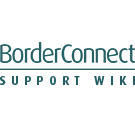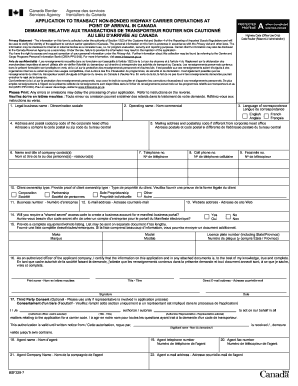What Is A Highway Carrier Code And How Do I Apply For One (DIY Customs Consulting)
| This article is part of the Customs Compliance Guide |
To transact business with Canada Border Services Agency (CBSA), highway carriers require a carrier code, regardless of how often they cross the Canadian border with commercial goods. A carrier code is a four-character unique identifier that is assigned by CBSA to identify a carrier. Only one carrier code is issued to each legal entity (corporation, partnership or sole proprietorship).
A highway carrier code is required to file an ACI eManifest and to use PARS barcode labels so shipments can be cleared by a customs broker.
For the purpose of assessing carrier code eligibility, a carrier is a person involved in international commercial transportation who operates a conveyance used to transport specified goods to or from Canada. To operate a conveyance means to have legal custody and control of the conveyance as:
- an owner
- a lessee under a lease or agreement of hire
- a charterer under an agreement of hire
- as a purchaser under a conditional sale or hire purchase agreement that reserves to the vendor the title to the conveyance until the purchase price is paid or certain conditions are performed
- a mortgagor
CBSA also issues unique four-character codes to eligible freight forwarders as well. Only one freight forwarder code is issued to each legal entity (corporation, partnership or sole proprietorship). A freight forwarder is defined as an agent who arranges for the transportation of goods, and who may provide other services such as consolidation and deconsolidation of shipments, de-stuffing containers, customs brokerage and warehousing.
For more detailed information on what a CBSA Highway Carrier Code is and how to qualify, visit CBSA's website here.
When applying for a Highway Carrier Code, the first step is to determine if you need a bonded or non-bonded carrier code. If you would like to learn how to become a bonded Canadian highway carrier, click here to learn more.
Once you've determined which type of carrier code you'd like to apply for visit CBSA's Highway Carrier Code Application page, follow the instructions laid out and you will need to fill out a Form BSF 329-7. In addition to the required forms that need to be completed, you will also need to supply CBSA with the following information:
- a complete list the vehicles in your fleet, or vehicle information if you're an owner-operator.
- Company Ownership documentation.
When applying for a bonded Highway Carrier Code, you will also need to fill out a D120 Customs Bond Form in addition to your BSF 329-7 form after you have completed your application to become a bonded Canadian Highway Carrier. You will also need to provide CBSA with the following information:
- a complete list the vehicles in your fleet, or vehicle information if you're an owner-operator.
- Company Ownership documentation.
- the original D120 Customs Bond (must be free of errors, as errors will result in the rejection of the application)
After your fill out the Form BSF 329-7 and the D120 Customs Bond Form (if applying to be a bonded Canadian Highway Carrier), you will then submit your carrier code application package to CBSA. Non-bonded carrier code applications can be submitted via email, and bonded carrier code applications must be done via mail. Non-bonded carrier code applications typically take around 3 business days to process, and upon acceptance a carrier code will be emailed to you. Bonded carrier code applications can take up to 10 business days, depending on when the bonded carrier code application package was received.
Once you receive your Highway Carrier Code from CBSA, you can then move on to the next step, ordering PARS barcode labels, as CBSA requires you to use your carrier code to cross into Canada within 30-days to avoid receiving a potential AMPS Penalties. You can order the required PARS barcode labels here from BorderPrint. To learn what barcodes or other customs documents are required, click here.
The highway carrier will also be able to register and submit ACI eManifests to CBSA once they have an approved carrier code. Highway carriers can register for BorderConnect ACI eManifest here. To learn what ACI eManifest is and how to register click here.
References
CBSA Guidelines: Highway Carrier Code Application Process - https://www.cbsa-asfc.gc.ca/services/carrier-transporteur/hccap-ddctr-eng.html
BSF 329-7 : Application to Transact Highway Operations with the CBSA - https://www.cbsa-asfc.gc.ca/publications/forms-formulaires/bsf329-7-eng.html
CBSA email for non-bonded carrier code applications: carrier-cargo@cbsa-asfc.gc.ca
Register for BorderConnect ACI eManifest: https://www.borderconnect.com
Order PARS Barcode Labels Online: https://www.borderprint.com

